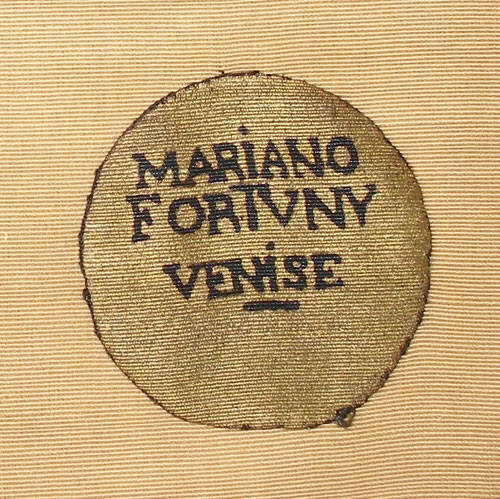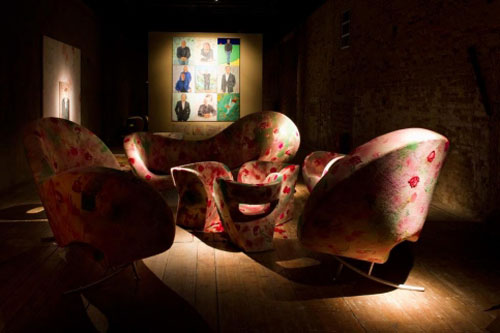One of the great innovators of early twentieth century fashion and design, Mariano Fortuny is perhaps best known for his inventions in the world of textiles and innovations in the field of theatrical lighting, however during the course of his career he embarked upon many different artistic genres: photography, printing, industrial design, fashion and painting. A retrospective of this multifaceted artist and designer will be open until the 27th of June at the impressive Gaudi building the Pedrera in Barcelona’s Eixample district. The exhibit is composed of 11 sections to give you a chance to examine his aesthetic in all of its physical manifestations, and the Pedrera provides the perfect backdrop for his modern and varied work.

Fortuny was born in Granada in 1871 and died in Venice in 1949. His father, also an artist, died when he was very young, and after his death his mother moved the family to Paris, and later to Venice. Fortuny began his artistic career as a painter, working with the Wagnerian theme of the total art object during this early period. As a set designer, he created a system of lights which was patented and used in theatres throughout Europe, and also designed other lamps whose designs are still being manufactured today. His interest in theatre eventually led him to fashion, although not to “fashion, merciless circus of throwaway trends” that we often think of as fashion. His work went beyond fashion, looking for something purer and more classic which sought to revindicate the female body and embellish its natural state without adding anti-natural or unhealthy accessories like the repressive corset.
Perhaps this is why we are most familiar with him as a fashion designer; although his clothing and textiles didn’t fill many closets (even in their day they were very expensive) they had a huge impact on fashions of the time and prefigured the eventual Women’s eventual liberation from the corset. His Delphos dress, first realized in 1907, was an inspired fusion of the silhouette of a Roman tunic with the Japanese shibari- inspired technical manipulation of silk to produce a pleated effect. We can still see his work on the red carpet today, worn by such Supermodels as Natalia Vodianova. His work continues to be relevant to today’s fashion, thanks to its capacity to reference the classic while embracing technical innovation.
It is an ideal moment to give thanks that women no longer are required to wear a restrictive corset everyday. Fill your suitcase with airy pleated dresses in cotton and silk, and see this retrospective. To feel even more at ease, rent affordable apartments in Barcelona.

 English
English
